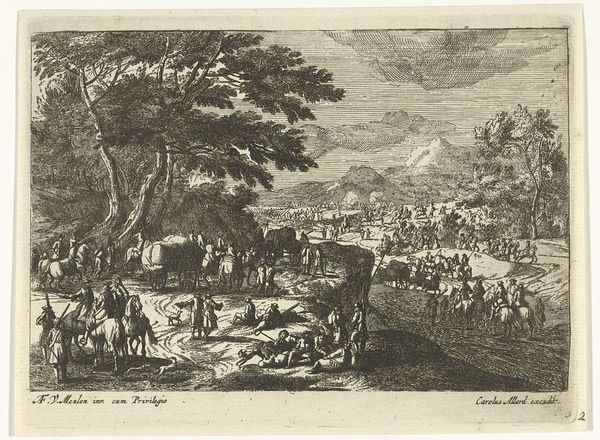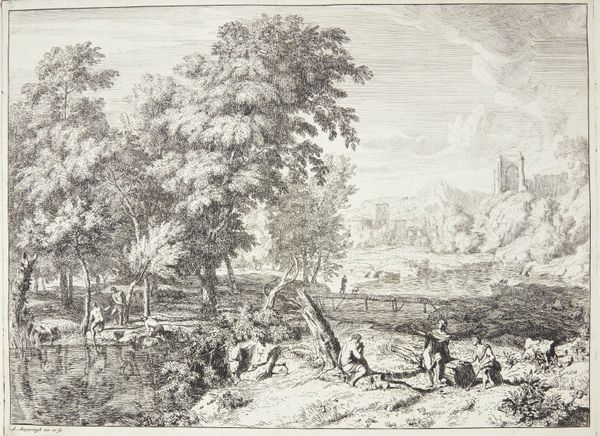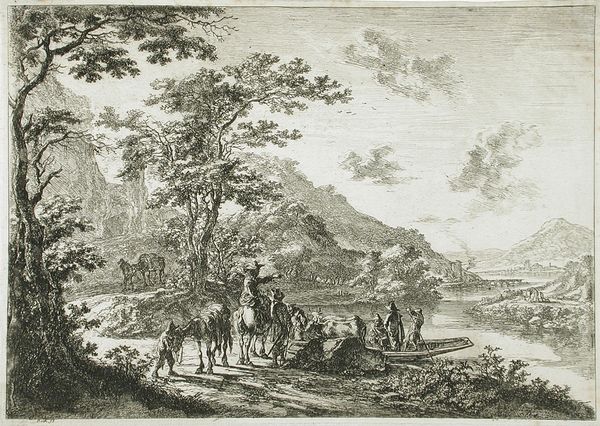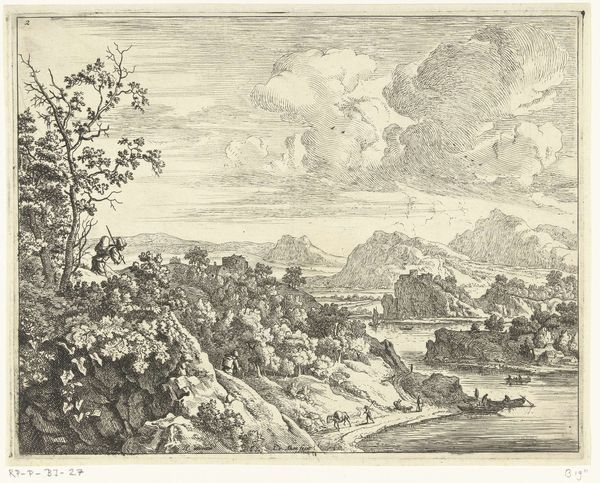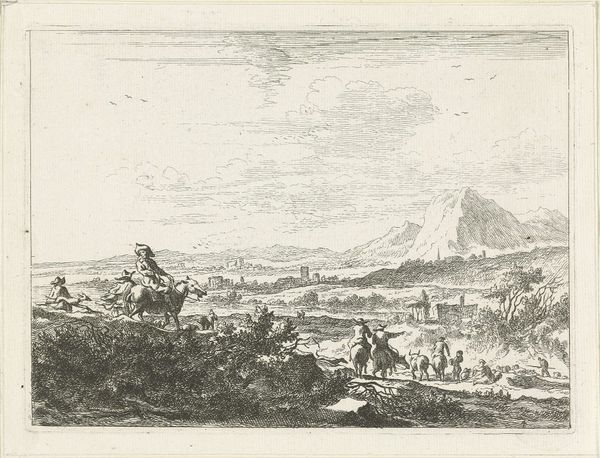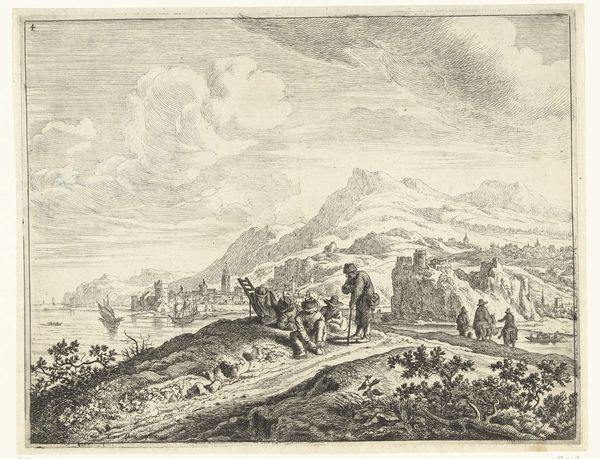
print, engraving
#
ink drawing
#
baroque
# print
#
war
#
landscape
#
history-painting
#
engraving
Dimensions: height 121 mm, width 173 mm
Copyright: Rijks Museum: Open Domain
Editor: So, this is "Landscape with Soldiers," an engraving made sometime between 1674 and 1733, attributed to Jan van Huchtenburg and now at the Rijksmuseum. It feels... almost like a freeze-frame from a film, capturing a moment of rest during what must have been a long march. What do you see in it? Curator: I see a potent layering of historical echoes, visible in the very arrangement of forms. The chaotic movement of the soldiers contrasts starkly with the grounded stability of the landscape – an enduring stage upon which human dramas are constantly enacted. Note how the figures are almost absorbed by the scene, reflecting the fleeting nature of conflict against the timeless backdrop of nature. Editor: That’s a beautiful way of putting it. So, is the landscape more than just a backdrop then? Curator: Precisely! The land *is* memory, carrying the imprint of countless battles. The towering tree, the subtle incline, even the cloud formations... each holds a symbolic weight, hinting at the persistence of the natural world beyond human strife. Even the resting soldiers could be viewed as allegories to those moments after conflict and hardship, reflecting our shared trauma through their fatigue and pain. Editor: It almost feels like a dance between history and the present, between specific conflict and universal themes. Curator: Exactly! It’s the Baroque aesthetic in tension: dramatic and grandiose on one level, intimate and deeply psychological on another. The engraving itself—the precise lines and meticulous details—become symbolic of control and order imposed on a fundamentally chaotic world. Do you notice anything particular about where the main figures rest? Editor: I do – the way the land gently inclines, creating an elevated view for those that are on the rocky cliff and highlighting those that are still on the march! Curator: Yes. And I would note that Huchtenburg, like other great artists, embeds meaning not just in *what* he depicts but in *how* he depicts it. Editor: I see what you mean. I hadn’t considered how the technique could also be symbolic. Curator: Thinking about symbols and historical contexts certainly offers a richer way to reflect on art.
Comments
No comments
Be the first to comment and join the conversation on the ultimate creative platform.
